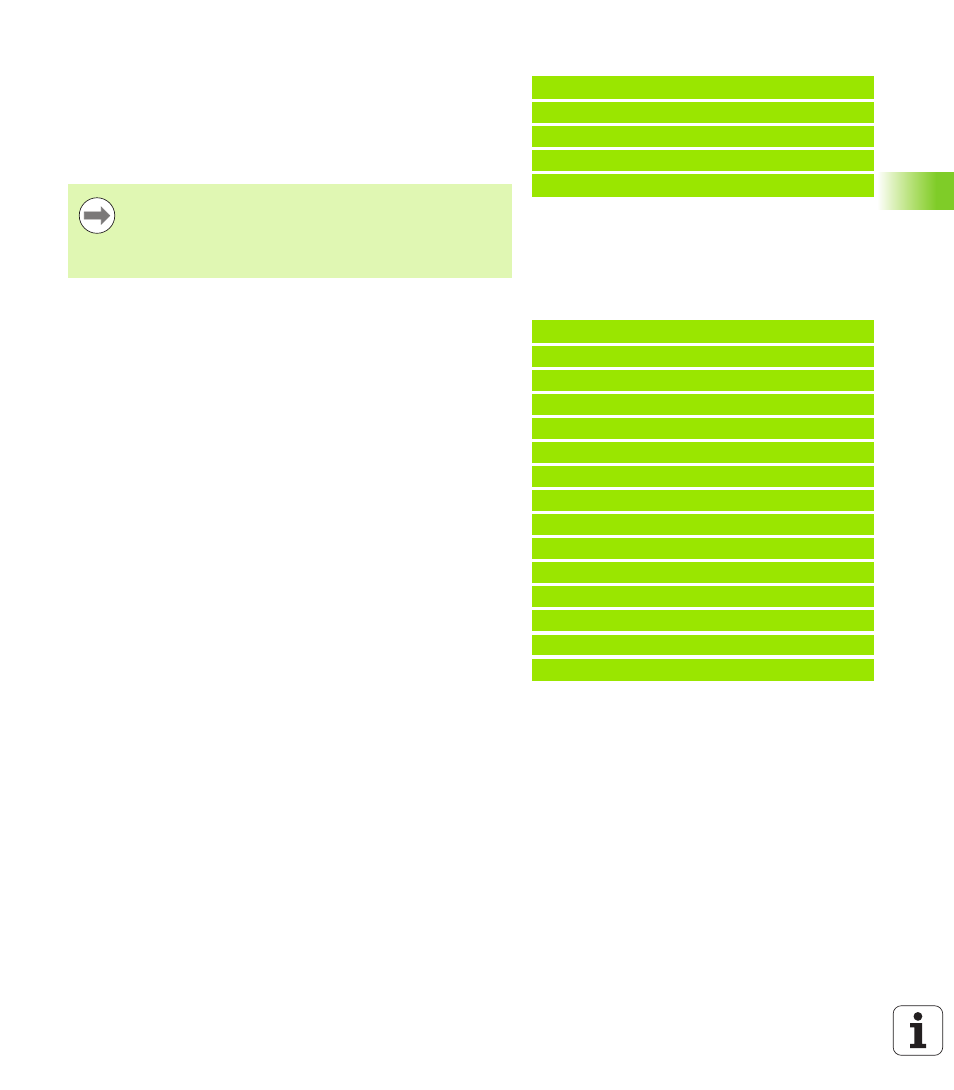31 pr ogr amming v a ri ables – HEIDENHAIN SW 548328-05 DIN Programming User Manual
Page 391

HEIDENHAIN MANUALplus 620, CNC PILOT 620/640
391
4.31 Pr
ogr
amming v
a
ri
ables
Tool compensation
#dt(n):
"n" is the compensation direction (X, Z, Y, S) and "t" is the
turret pocket number assigned to the tool. The variable calculation
uses the table "toolturn.htt".
Simulation:
When the program is selected, the table "toolturn.htt"
is read by the simulation. The simulation function now uses the table
of the simulation.
Event bits:
Variable programming interrogates a bit of the event for 0
or 1. The meaning of the event is determined by the machine
manufacturer.
#en(key):
"n" is the channel number and "key" is the event name.
Used for reading external events set by the PLC.
#e0(key[n].xxx)
"n" is the channel number, "key" is the event name,
and "xxx" is the name extension. Used for reading external events
set by the PLC.
Example: Tool compensation
. . .
N.. #d3(X)=0
N.. #d3(Z)=0.1
N.. #d3(S)=0.1
. . .
Tool information can also be interrogated directly via the ID
number. This may be necessary, for example, if no turret
pocket has been assigned. For this purpose, program a
comma and the ID number of the tool after the desired
identification, e.g. #L1 = #W1( ZL, "001").
Example: Events
. . .
N.. #g1 = #e1( "NP_DG_axis_module_wait")
N.. PRINT( "NP_DG_axis_module_wait=",#g1)
N.. #g2 = #e1( "DG_DATA[1]")
N.. PRINT( "DG_DATA[1] =",#g2)
N.. #g3 = #e1( "SPI[1].DG_TEST[1]")
N.. PRINT( "SPI[1].DG_TEST[1] =",#g3)
. . .
N.. IF #e1( "NP_DG_axis_module_wait")==4
N.. THEN
N.. G0 X40 Z40
N.. ELSE
N.. G0 X60 Z60
N.. ENDIF
. . .
